Clouded Agaric / Autumn / Winter / Edible
Enter the misty world of the Clouded Agaric, scientifically known as Clitocybe Nebularis, as we unravel the enchanting qualities of this captivating mushroom.
In this blog post, we embark on a journey to discover the ethereal beauty and ecological significance of this woodland treasure. With its pale gray caps and delicate gills, the Clouded Agaric casts a spell of intrigue upon those who encounter it.
Description
A large substantial mushroom that normally grows in rings. Edible and taste for some but many people do suffer gastro intestinal issues after consumption.
Scientific Name
Clitocybe Nebularis
Common Names
Clouded Agaric, Clouded Funnel, Farting Funnel, Fog Cap.
Family
Tricholomataceae
Habitat
They are saprotrophic, living off leaf and needle litter and can be found in most types of woodland. They prefer humus rich soil. I’ve found them growing in grass some distance from tree’s.
Identifying Features:
Cap:
Generally, grey to brown in colour, covered in a whitish ‘bloom’ (hence its common name) Convex when young becoming flat or funnel shaped with age. At all stages, they have an inrolled edge. The flesh is thick and white.
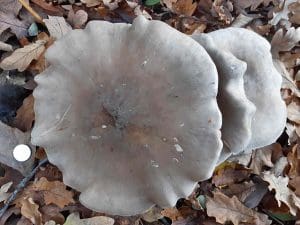
Stem:
Stout and swollen towards the base, roughly the same colour as the cap perhaps slightly lighter. The stem often becomes hollow when older and are a little brittle when broken.
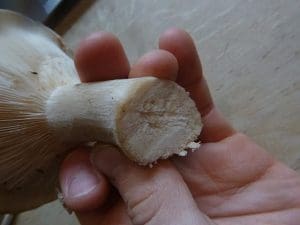
Gills:
The gills are white when young, becoming more yellow with age, they are crowded and decurrent to adnate and forked.
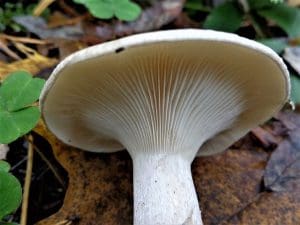
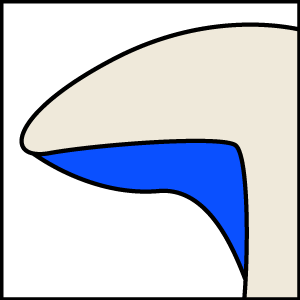
Smell:
Unpleasant.
Spores:
White to cream.
Uses
In food
They must be thoroughly cooked before consumption and even then they aren’t tolerated by everyone as they can often cause gastrointestinal problems.
If you are able to tolerate them the taste is sweet and mushroomy. I would advise boiling them in water for 10 minutes beforehand.
If it is your first time trying them you’re advised to thoroughly cook a small part and wait 24 hours to see whether there is any adverse reaction.
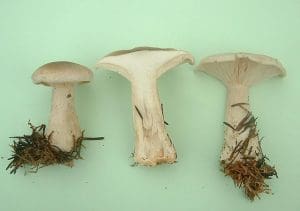
Harvesting
They grow in ‘fairy rings’ that can sometimes be many metres across. The size of the ring indicates the age of the mycelium. So if you are able to enjoy them they can be a great find as it’s very quick and easy to fill several baskets.
Known hazards
Tasty for most but they can cause gastric issues in roughly 1 out of 5 people.
The late, great Roger Philips reports “Said to be edible, but known to cause gastric upsets in many people“.
Potential lookalikes
They could be mistaken for a Wood Blewit (Clitocybe Nuda) but the Clouded Funnel lacks any purple colouring.
The Livid Pinkgill (Entoloma Sinuatum) also looks similar but this is a much rarer mushroom and it pinkish gills as the name suggests and it has a floury/mealy aroma. The Livid Pinkgill is toxic so care should be taken.
Extra Notes
While you’re out looking for the Funnel keep your eyes open for the Piggyback Rosegill (Volvariella Surrecta) it’s quite rare but is a parasite on mature Clouded Funnels as its rare it shouldn’t really be collected.
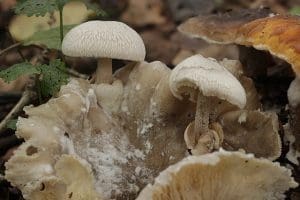



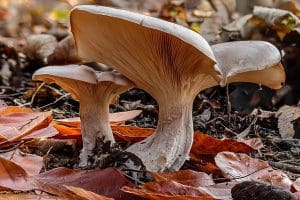



Leave a Reply
You must be logged in to post a comment.